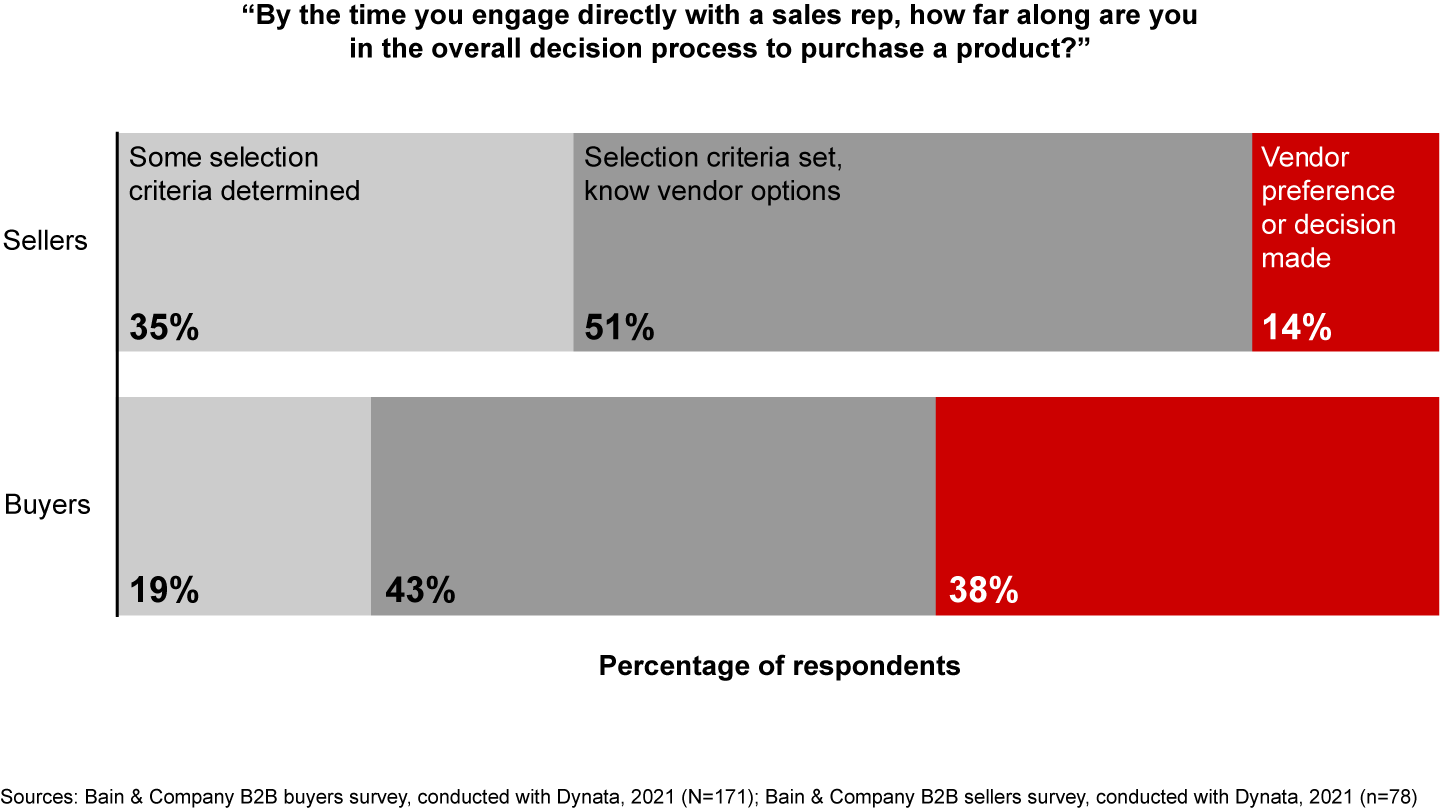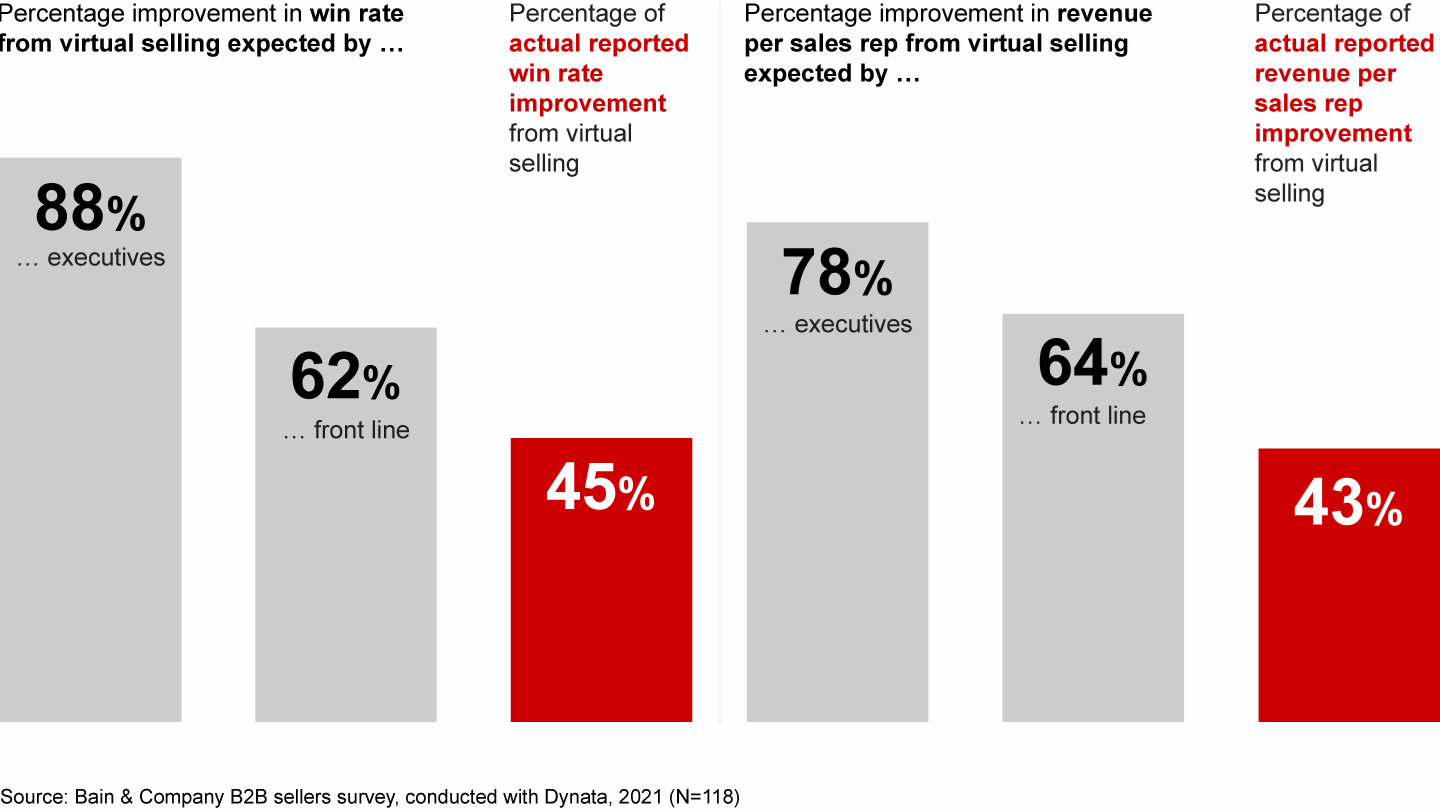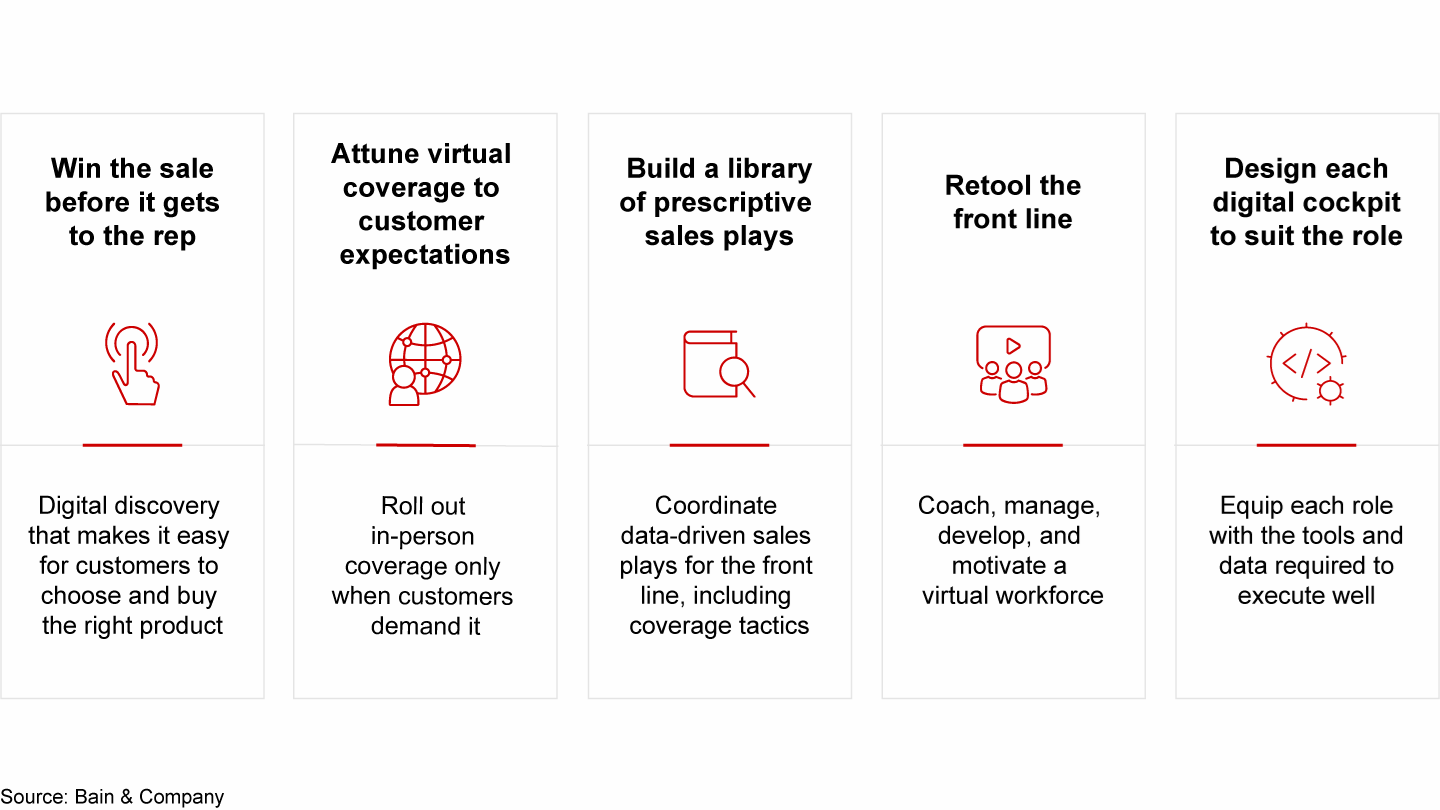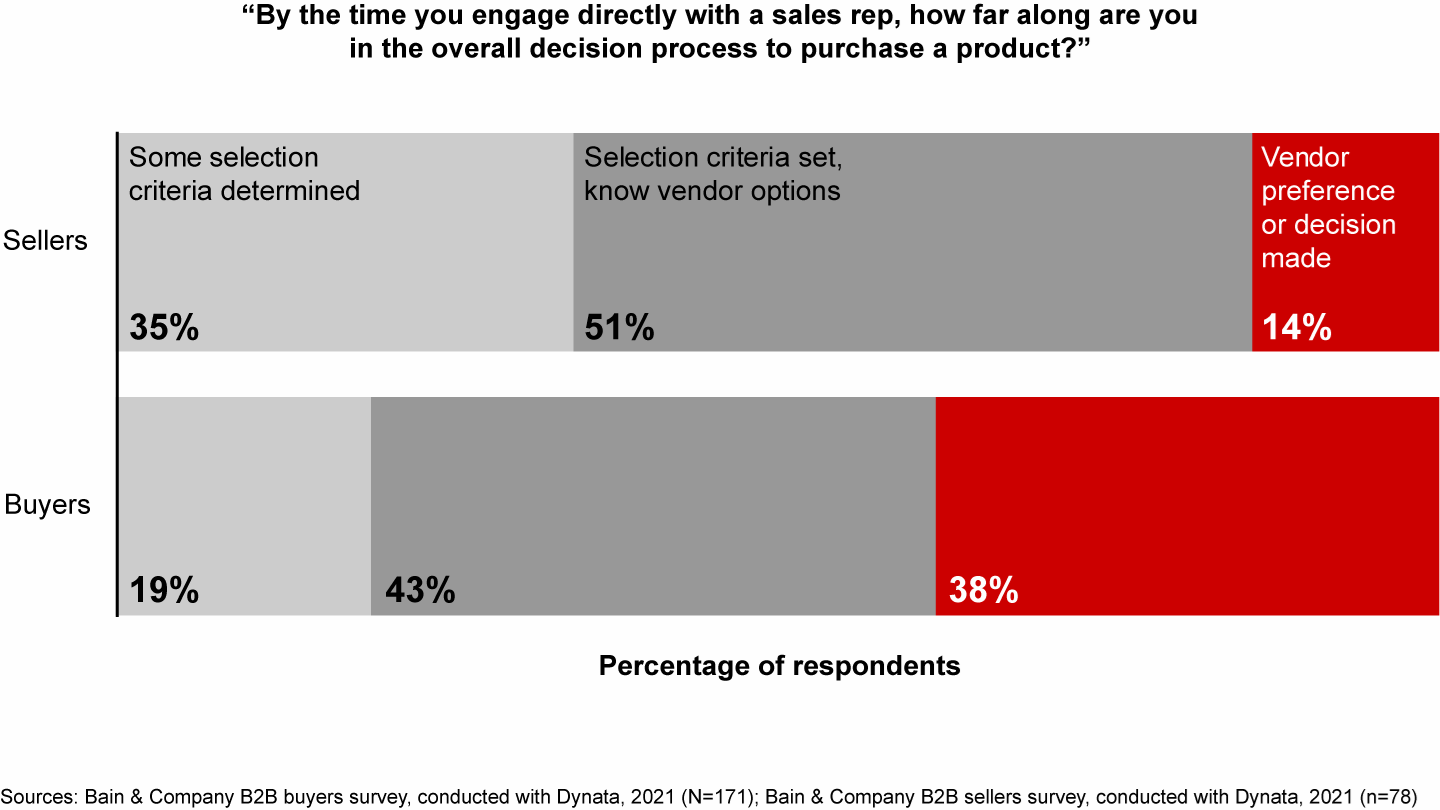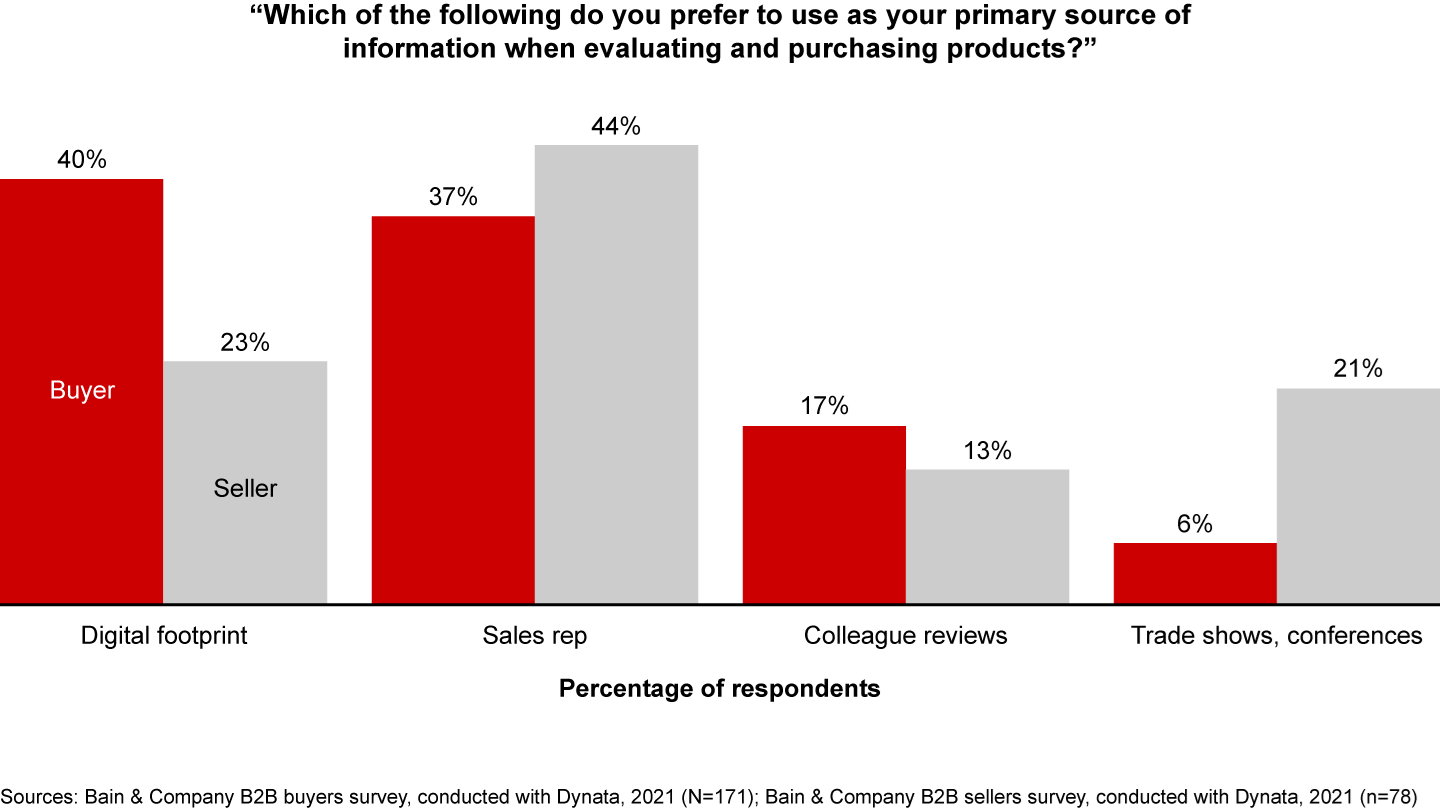Brief

At a Glance
- Despite broad acceptance of virtual selling in business-to-business markets, execution by commercial organizations often falls short on win rates and revenue per sales rep.
- The optimal balance of digital, phone, and field sales provides self-discovery and remote interactions when appropriate and in-person engagement when help or expertise is needed.
- Leading commercial organizations also use prescriptive sales plays—that is, coordinated sales and marketing actions to create and win an opportunity with a specific customer or prospect.
The Covid-19 pandemic has changed how most business-to-business (B2B) companies think about selling. More than a year of working from home showed that Zoom meetings and remote demonstrations work just fine most of the time. Many customers, it turns out, actually prefer the virtual approach.
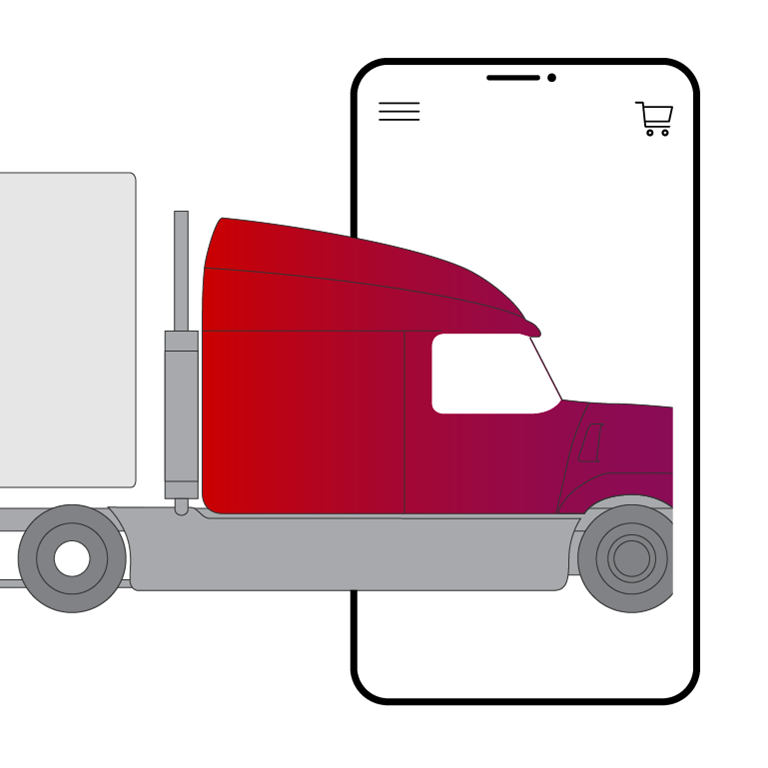
Fine-Tuning B2B E-Commerce as Buyer Preferences Shift
The pandemic has acclimated more business-to-business buyers to virtual channels, including self-service. Here’s how winning suppliers are taking advantage.
A recent global Bain & Company survey, conducted with Dynata, found that 92% of B2B buyers prefer virtual sales interactions, up 17 percentage points from our survey in May 2020. More sellers also realize its effectiveness, now at 79% compared with 54% last May. Suppliers appreciate how virtual selling can yield three benefits: faster, more frequent communication with customers; cost-effective interactions; and the ability to interact with more prospects.
Yet despite a broader acceptance of virtual selling, the execution often falls short in both effectiveness and efficiency. Frontline sales staff in particular have lower expectations, as they report less improvement on win rates and revenue per sales representative than executives do (see Figure 1).
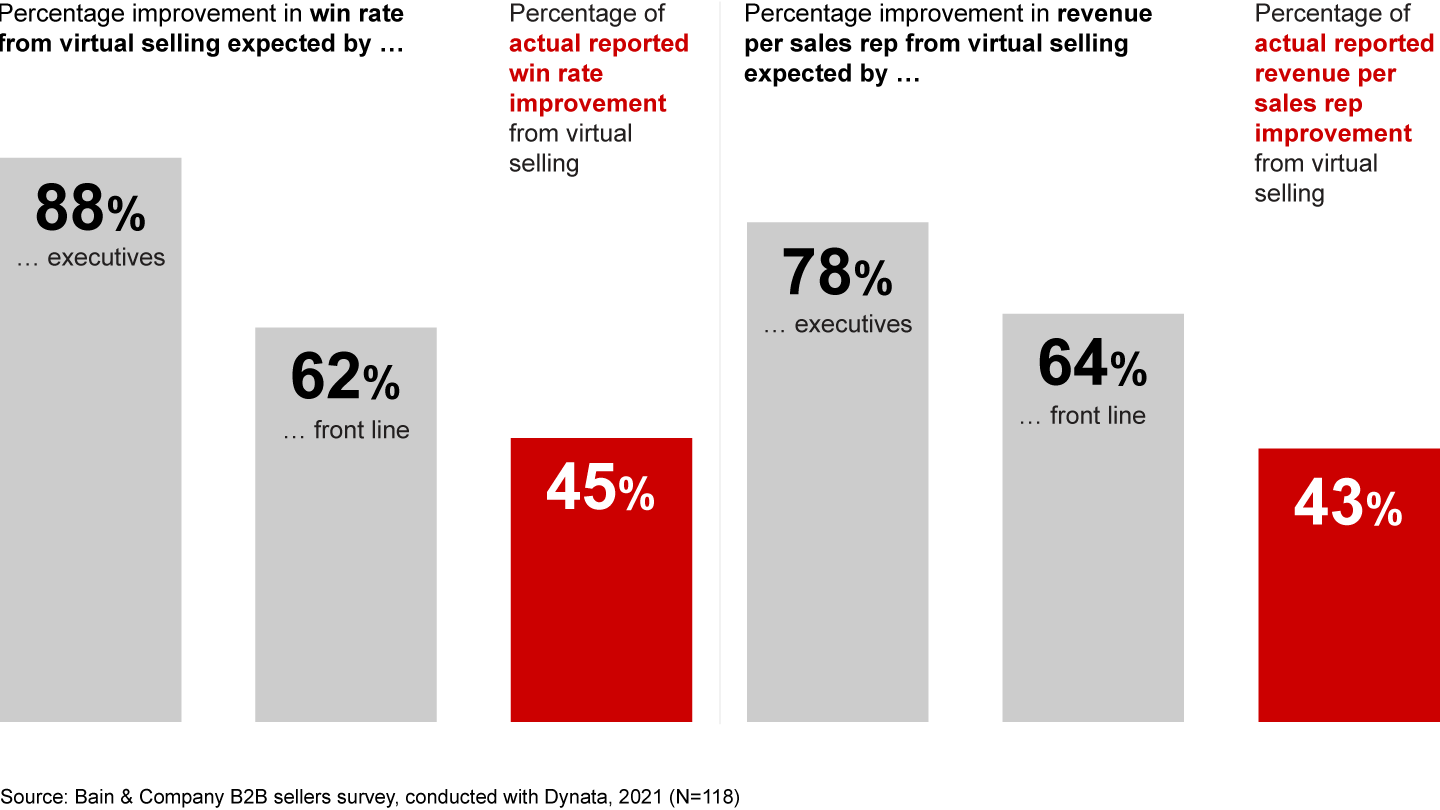
Although Covid-19 pulled the adoption of virtual sales forward, the strategy has been around for years. Traditionally, firms viewed it as a low-cost way to address and service the long tail of lower-value accounts. That began to change even before the pandemic. Armed with more sophisticated and affordable digital tools, B2B companies have been steadily shifting to virtual channels, even for complex buying cycles that require careful choreography.
Companies that get it right are constantly fine-tuning the optimal balance of digital, phone, and field sales. The right balance provides self-discovery and remote interactions when appropriate and in-person engagement when high-touch help or expertise is needed. The most successful practitioners have not simply made a few virtual tweaks to their traditional selling model, and they have not focused solely on small deals or small accounts; instead, they have focused on mastering five areas (see Figure 2).
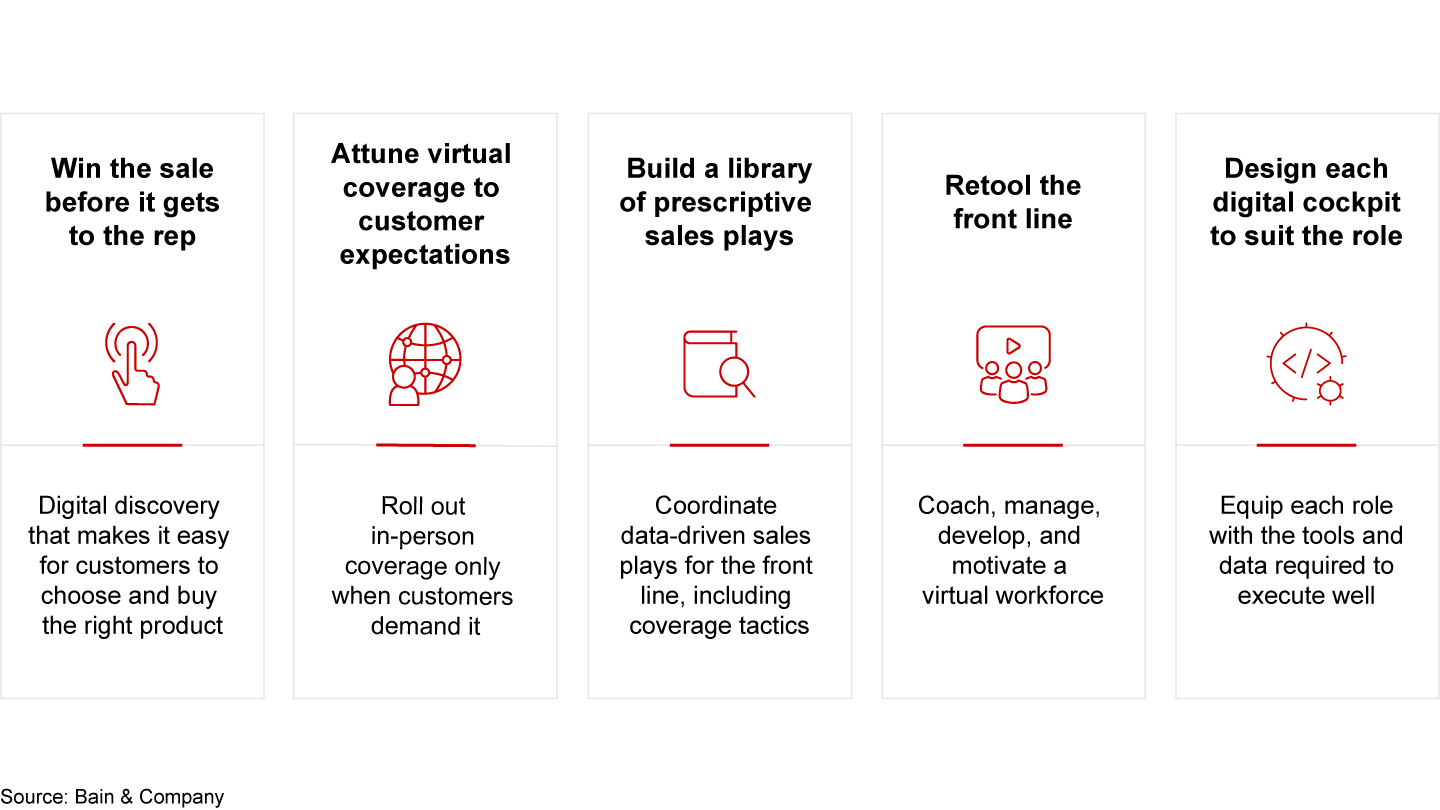
Win the sale before it gets to the rep
In most business markets, there’s a big gap between sellers’ beliefs and buyers’ expectations. Roughly 80% of buyers have set their specifications before talking to a sales rep, and about 35% of buyers have a vendor preference before talking to a rep (see Figure 3). Buyers tend to prefer digital sources of information in most cases, while sellers overstate the importance of in-person forums such as trade shows (see Figure 4).
These dynamics have a clear implication: Customers doing online research on a category should be able to find a potential supplier quickly, find an offering that fits their needs, and experience the product or service through web-based demos and videos. They should then be able to quickly and easily engage, whether through a chat bot, live chat, or a sales rep.
Attune virtual coverage to customer expectations
Traditionally, a sales rep and a product specialist were joined at the hip in selling big-ticket systems to enterprise clients. Increasingly, however, companies roll out in-person coverage only when customers demand it. They are managing product specialists differently, allowing managers to assign them on a case-by-case basis to answer questions and do product demos for the most important deals. That makes the entire sales process more nimble and responsive while also trimming cost.
At a global technology giant, a shift in its marketing mix, its approach to digital marketing, and virtual sales tactics has allowed the company to target a segment of tens of thousands of medium-sized companies more effectively.
Build a library of prescriptive sales plays
While getting the mix of virtual and field sales right is essential, it’s not sufficient. Reaching full potential means spelling out in a repeatable way how the model should work depending on the specific circumstances. That’s where prescriptive sales plays enter the picture.
A sales play is a coordinated set of sales and marketing actions to create and win an opportunity at a specific customer or prospect. It sets the cadence of the sale, defining how sales reps, experts, and others reach out to customers and in what sequence. The play orchestrates resources across functions, supplying all marketing content, messaging, and other sales collateral. It also serves as the basis for regular coaching and evaluation, defining key performance indicators and providing dashboards to monitor them. Notably, sales plays are designed to expand the number of possible deals in the pipeline and convert them to actual revenue for a specific commercial objective, such as cross-selling or acquiring a new customer.
Accelerating sales was a pivotal goal for a public relations software company that offers a cloud-based platform to reach journalists along with analytics to measure results and gain audience insights. The company set up a cross-functional team to determine which plays to focus on, the right steps for each play, what marketing content and training materials the team should use, and a list of other elements important to the sale.
The new system allowed this company to rapidly deploy plays aimed at engaging new customers, winning back old ones, managing renewals, and upselling new services. When it came to renewals, for instance, the company recognized that it wasn’t enough just to knock on the door once a year and ask customers to renew. Instead, the sales play used advanced analytics and risk-scoring models to identify which customers weren’t getting the most out of their software, and then prompted reps to offer them new training or other forms of help. The result: Renewals jumped by 10% to 20%, to new highs.
Retool the front line
Successfully deploying virtual sales entails an overhaul of sales support and management methods on several fronts. To produce behavioral insights, for instance, sporadically passing down received wisdom on effective sales behavior won’t cut it. The best sales teams develop a systematic approach to uncovering insights about customer behavior, using machine learning analysis of customer interaction data. Zoom, the video communications firm, uses software to analyze call data in order to identify winning communication styles and inform its training of sales staff.
Coaching methods change in a virtual world. Quarterly ride-along sessions with the boss become digital and more frequent. Qualia, a real estate company, uses software that allows sales managers to listen in and provide feedback in real time.
Similarly, the set of skills also must change. Finding talented virtual sellers relies less on headhunters and assessment for cultural fit and more on digital fluency. A wider range of personality types can flourish in virtual sales, so the recruitment pool is larger than for field sales.
Finally, collateral delivered by marketing and sales support groups shifts to more engaging content such as customer testimonial videos, easy-to-use demos, and captivating virtual pitches. Sisense, a business intelligence software company, built a central digital shop for sales and marketing demos and other content that reps can tailor to each customer.
Design each digital cockpit to suit the role
As sales and marketing software has proliferated, most B2B companies have assembled a mishmash of tools that, at best, limit the return on investment and, at worst, confuse and overwhelm the front line. It’s far more effective to design each blend of software products for specific roles (see Figure 5).
Marketing roles, for instance, need tools for segmentation and scoring, marketing automation, and attribution and analytics. Sales roles need account planning, prospecting, opportunity management, and quote/proposal/closing.
Adopting software carefully for each role has been part of one data storage and solutions company’s bid to improve its market coverage through virtual selling. Using an analytics tool to prioritize the most promising large enterprise accounts based on their potential spending, the company trimmed the client list for each field rep by half and reassigned accounts more logically based on geography. It added a new inside sales development role to support the field by drumming up new leads. Small and midsize customers, which were previously covered by the field reps, shifted to a separate inside sales team.
The new inside team installed several software products to improve their chances. To make prospecting more productive, the company deployed ZoomInfo, which was linked to a Salesforce system. A sales engagement platform automated customer outreach and made reps smarter by, for instance, keeping track of who downloaded a white paper so that they could follow up. The company also invested in a call analytics system to learn from what the most successful sellers were doing.
This new structure has reduced the field reps’ travel by 60% and dramatically increased the time they can spend with their most important customers. Among midmarket and small customers, the virtual model positioned the company to capture a large, untapped opportunity while cutting the cost of acquisition significantly. Customers were happier as well; when surveyed, three out of four said they prefer a virtual sales channel.
No matter when the pandemic abates or when a new crisis might materialize, virtual selling is here to stay. Moving with conviction is the key to making these changes with a minimum of disruption. Change takes time, but virtual selling can rapidly bring discipline to the most unruly sales organizations and generate measurable results in short order.

About the Research
Data powered by Dynata, a leading global first-party data and insights platform.

Virtual Selling Insights
These insights explain how companies can improve sales processes, navigate digital channels, and thrive in the virtual selling market.

